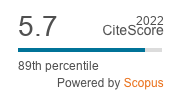Insects are efficient converters of different types of low-quality organic matter into biomass rich in good quality protein. Flies are particularly well suited for the biodegradation of organic waste and larval stages can be used as animal feed. Currently, only Hermetia illucens (Diptera: Stratiomyidae) and Musca domestica (Diptera: Muscidae) are accepted for feeding purposes by European authorities. However, there are several other species potentially interesting to be used in animal feed. This review compiles available information regarding species from Calliphoridae family, ranging from scattered records of its use as animal feed to nutritional profile descriptions. Comparisons are made with the most common ingredients used as animal feed, fish meal and soybean meal as well as with other two authorised species by the European regulation, H. illucens and M. domestica. Concerns about pathogen transmission are also discussed. Blow flies present a real opportunity to recycle organic side streams under a circular economy framework and can ultimately contribute to the reduction of nutrients shortage in animal feed. Other advantages include their high fertility, short life cycle, known rearing methodologies and good nutritional profile. Further, their potential as pathogen transmitters is equivalent to the domestic fly. For all these reasons blow flies are good candidates to be used as ingredients in animal feed.
REVIEW ARTICLE
Blow flies (Diptera: Calliphoridae) promising candidates as animal feed ingredients
C. Prado e Castro Related information , O.M.C.C. Ameixa Related information
, O.M.C.C. Ameixa Related information
1ECOMARE, Centre for Environmental and Marine Studies (CESAM), Department of Biology, University of Aveiro, 3810-193 Aveiro, Portugal.
*Corresponding author 1: catarinapcastro@ua.
*Corresponding author 1: catarinapcastro@ua.
 , O.M.C.C. Ameixa Related information
, O.M.C.C. Ameixa Related information1ECOMARE, Centre for Environmental and Marine Studies (CESAM), Department of Biology, University of Aveiro, 3810-193 Aveiro, Portugal.
*Corresponding author 2: olga.
*Corresponding author 2: olga.

Journal of Insects as Food and Feed: 7
(7)- Pages: 1065 - 1076
Published Online: June 09, 2021
Abstract
Keywords: flies, nutritional profile, organic streams, circular economy
2022 Journal Impact Factor
5.7
source: Journal Impact Factor 2023™ from Clarivate™

Institutional Offers
For institutional orders, please contact [email protected].
Purchase Options
-
G. Daş, M.M. Seyedalmoosavi, K. Schleifer, M. Mielenz and C.C. Metges
-
-
M. Barrett, S.Y. Chia, B. Fischer and J.K. Tomberlin
-
D.G.A.B. Oonincx and M.D. Finke
-
G. Bosch and K.S. Swanson
-
K.B. Barragan-Fonseca, M. Dicke and J.J.A. van Loon
-
A. van Huis
-
M. Tschirner and A. Simon
-
S. Kelemu, S. Niassy, B. Torto, K. Fiaboe, H. Affognon, H. Tonnang, N.K. Maniania and S. Ekesi
-
S. Diener, C. Zurbrügg and K. Tockner
Editor's Choice: Birgit Rumpold



